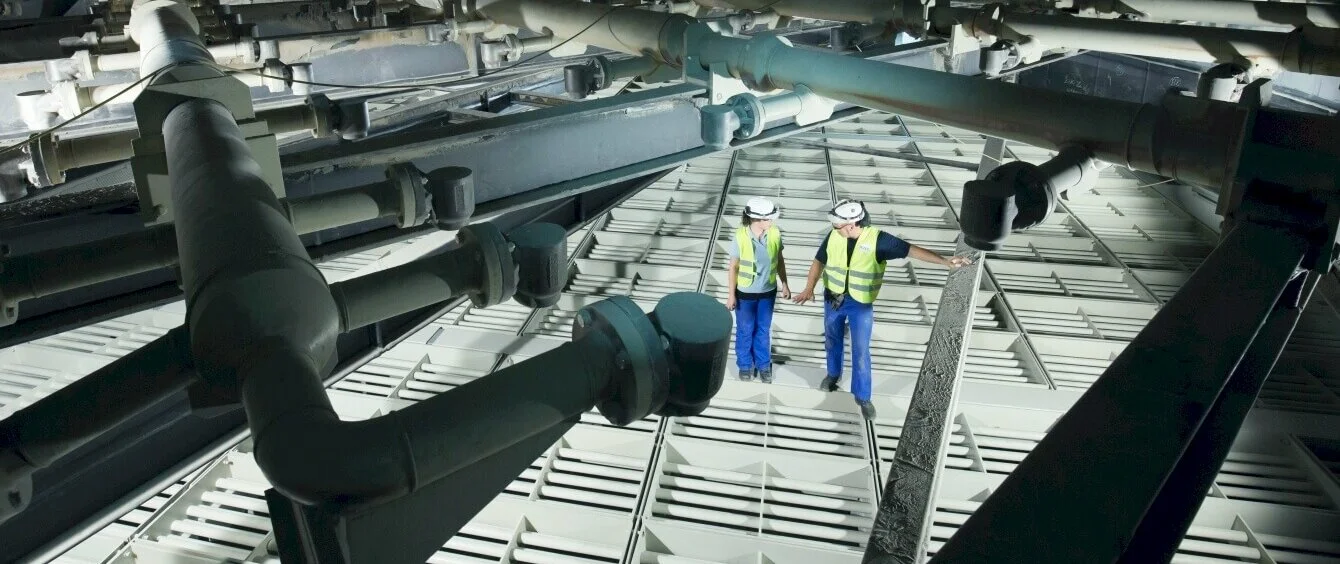Synthetic fuels and battery storage, highly efficient gas-fired power plants and electricity generation using biomass: RWE views itself as the backbone of the energy transition. That’s why the company is investing in ways to make energy production more climate friendly and at the same time exploring ground-breaking technologies that may shape the future.
Ensuring a secure supply of energy – during the energy transition and far beyond: This is the objective that defines RWE’s business strategy. For many years, the Essen-based company has invested in research and development with technologies that are more climate friendly and innovations that may pave the way to the future. In doing so, the main concern is to ensure security of supply throughout this epochal transformation of energy use.
This involves high-performance energy storage systems to balance out the volatility of renewables, as well as new ways of improving the efficiency of renewable resources such as biomass. At the same time, the more flexible use of fossil fuels with lower emissions will also play a role for the foreseeable future.
Making optimum use of existing resources
One such effort can be found at RWE’s plant in Tilbury in southern England, where the company is working on a new, highly modern gas and steam turbine power plant. By using the gas twice, as a fuel for the gas turbine and for heating the steam, it is possible to generate 1.5 times as much electricity as other gas-fired power plants, with the same amount of gas.
Complemented by an additional peak-load turbine and a high-performance battery storage system for balancing out frequency fluctuations in the power grid in a matter of milliseconds, when completed the Tilbury Energy Centre (TEC) will be able to support the UK grid in all aspects of load and balancing power.
Maintaining network stability using stored green electricity
RWE is pursuing the same goal with a 7-megawatt battery storage system installed by Belectric at its pumped storage power plant in Herdecke near Dortmund, which went online in early 2018. In the event of temporary outages or fluctuations in wind and solar generation volumes, it can provide the missing power in a fraction of a second to maintain the network frequency of 50 Hertz.
RWE also works to balance out grid fluctuations from renewables in Germany with its lignite-fired power plants featuring optimised plant engineering (BoA). These retrofitted plants use the coal more efficiently, releasing less greenhouse gases in the process. As Frank Weigand, CEO of the lignite and nuclear power company RWE Power, declared, “By 2030, we will reduce our CO2 emissions by 40 to 50 percent.”
Creating new resources
At the Coal Innovation Centre located at the Niederaussem BoA power plant in the Rhineland, RWE is developing innovative methods to make coal-based electricity generation more climate friendly. One of the focal points is to use the greenhouse gas carbon dioxide (CO2) as a valuable raw material: “We are working on a number of projects to utilise the CO2 we separate from the flue gas, for example as a replacement fuel for diesel,” said Weigand.
Working on the basis of ‘CO2 scrubbing’, a process for capturing the carbon dioxide from power plant flue gases has been developed at Niederaussem and optimised to the point that it can be marketed at the international level. The highly pure gas which is captured can be used as a chemical building block. For instance, it can be chemically converted to dimethyl ether, which is suitable as a low-emissions fuel for diesel engines. The carbon dioxide can also be processed further into methane, i.e. synthetic natural gas, which can be stored, distributed and used in essentially the same way as fossil-based natural gas.
Climate protection, security of supply, and affordable electricity: We have to view this triangle as a whole. Frank Weigand, CEO RWE Power AG
Efficient use of biomass
The ‘Zambezi’ project is also centred on tapping new resources, or rather on using old resources in a completely new way. In cooperation with the partners AkzoNobel, Chemport Europe and Staatsbosbeheer, RWE is investing in making the Zambezi process developed by the Dutch biotech company Avantium marketable. Biomass – consisting of waste materials from the lumber industry and agriculture – is broken down into its components to obtain valuable chemical building blocks which can be used as the basis for bio-plastics to replace petroleum products.
Following this utilisation, the residual biomass can be used as a source of energy in solid-fuel power plants. In the Netherlands, RWE has retrofitted two coal-fired power plants which are now already partially using biomass instead of coal. Along with hydro and geothermal power, biomass is a source of renewable energy that offers a steady, secure supply that can be planned. By creating this kind of recycling economy, it is possible to boost the potential role of the globally available biomass resources in promoting climate protection.
Looking forward in all areas
RWE Supply & Trading is a good example of how RWE is looking forward in all of its business areas. At the start of the year, RWE’s Supply & Trading division played a pioneering role in trading with biogas: In the future, 200 gigawatt hours of biogas will be delivered annually from the British Isles to the Netherlands via the Interconnector Pipeline in Bacton.
Whether it’s technical progress or ground-breaking new business, RWE has a clear commitment to innovation. As Frank Weigand said, “Climate protection, security of supply, and affordable electricity: We have to view this triangle as a whole.”
